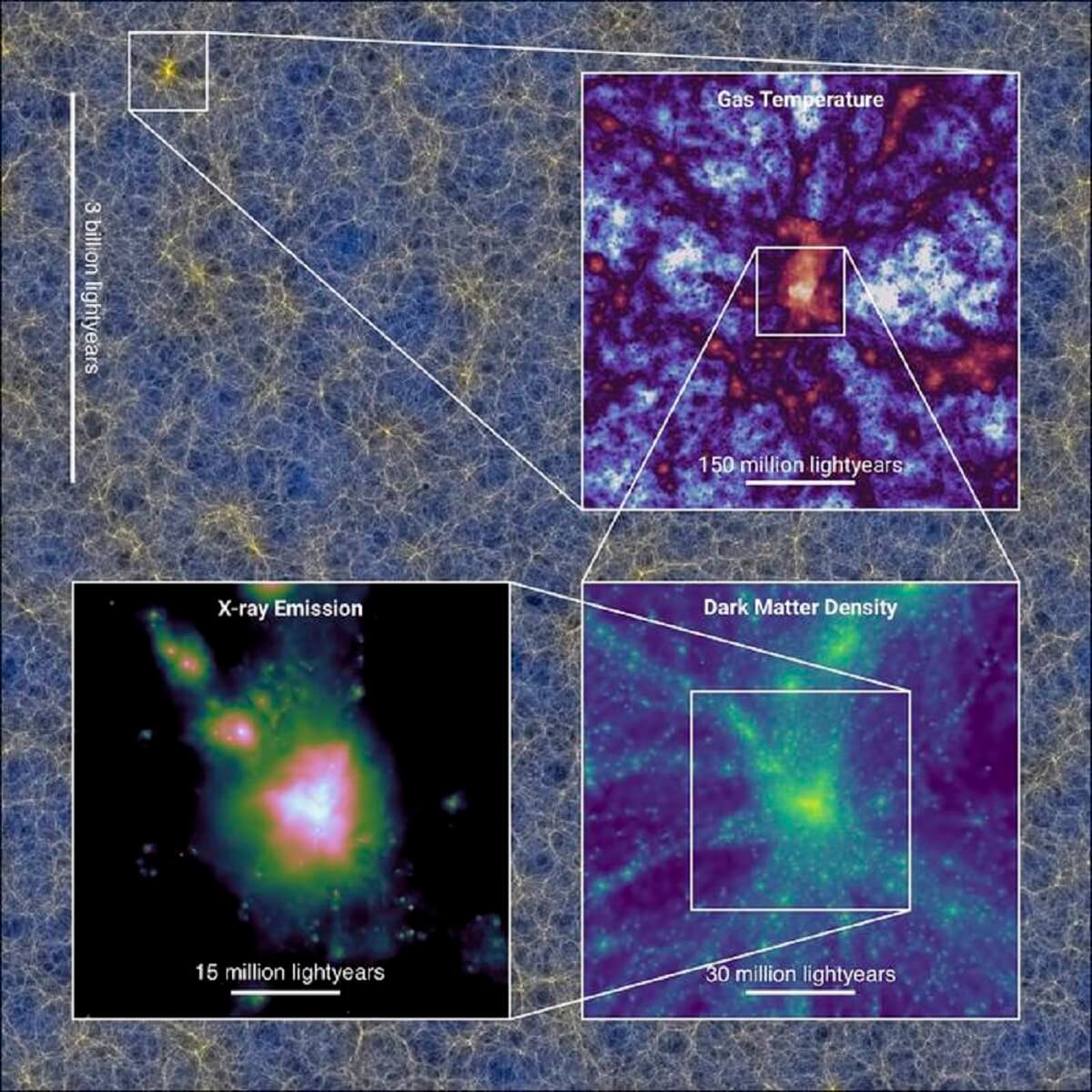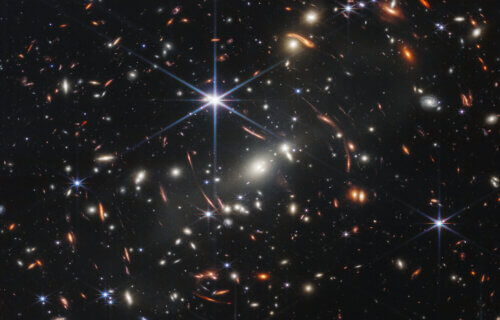LEIDEN, Netherlands — Scientists in Europe have unveiled the most expansive supercomputer simulation, aimed at studying the evolution of the universe — from the Big Bang to the present.
Titled FLAMINGO, this simulation analyzes the progression of all the universe’s components — including ordinary matter like stars and planets, dark matter, and dark energy — all governed by the laws of physics. As the simulation evolves, detailed virtual galaxies and galaxy clusters appear.
The name “FLAMINGO” is an acronym for “Full-hydro Large-scale structure simulations with All-sky Mapping for the Interpretation of Next Generation Observations.”
This monumental simulation was the brainchild of experts from Durham University, Liverpool John Moores University, and Leiden University in the Netherlands. The primary objective is to enable scientists to juxtapose the virtual universe with actual observations taken from advanced telescopes, including the James Webb Space Telescope. Such comparisons could shed light on whether our current cosmological models, which explain the universe’s evolution, align with actuality.

Historically, simulations juxtaposed with universe observations have primarily considered cold dark matter, deemed a pivotal facet of cosmic structure. However, scientists now emphasize the significance of accounting for ordinary matter (comprising a mere 16% of the universe’s total matter) and neutrinos (elusive particles that scarcely interact with ordinary matter) in comprehending cosmic evolution.
“Although the dark matter dominates gravity, the contribution of ordinary matter can no longer be neglected since that contribution could be similar to the deviations between the models and the observations,” says principal investigator, Professor Joop Schaye from Leiden University, in a media release.
The FLAMINGO simulation meticulously mapped the universe’s formation in terms of dark matter, ordinary matter, and neutrinos, adhering to the standard physics model. The team utilized a potent supercomputer in Durham to run these simulations over two years, adjusting variables such as galactic wind intensity and neutrino mass. Preliminary outcomes underscore the cruciality of incorporating ordinary matter and neutrinos for accurate predictions.
Emerging telescopes, like the European Space Agency’s Euclid, are amassing extensive data on galaxies, quasars, and stars. Simulations like FLAMINGO will be pivotal in making sense of this data by aligning theoretical projections with observational insights.
Executing the FLAMINGO simulations demanded over 50 million processing hours on the Cosmology Machine (COSMA 8) supercomputer. The researchers innovated a new code, named SWIFT, to efficiently allocate computational tasks across thousands of Central Processing Units (CPUs), sometimes reaching 65,000.
“Cosmology is at a crossroads. We have amazing new data from powerful telescopes some of which do not, at first sight, conform to our theoretical expectations,” concludes Professor Carlos Frenk of Durham University, a collaborator on the FLAMINGO research. “Either the standard model of cosmology is flawed or there are subtle biases in the observational data. Our super precise simulations of the Universe should be able to tell us the answer.”
The study is published in the journal Monthly Notices of the Royal Astronomical Society.
You might also be interested in:
- Best Of The Best Telescopes For Beginners In 2023: Top 5 Stargazers Most Recommended By Experts
- Simulated universe hypothesis: Are we really living in a Matrix-like computer simulation?
- ‘Assembly Theory’ unites physics and biology to explain the universe
South West News Service writer Stephen Beech contributed to this report.

